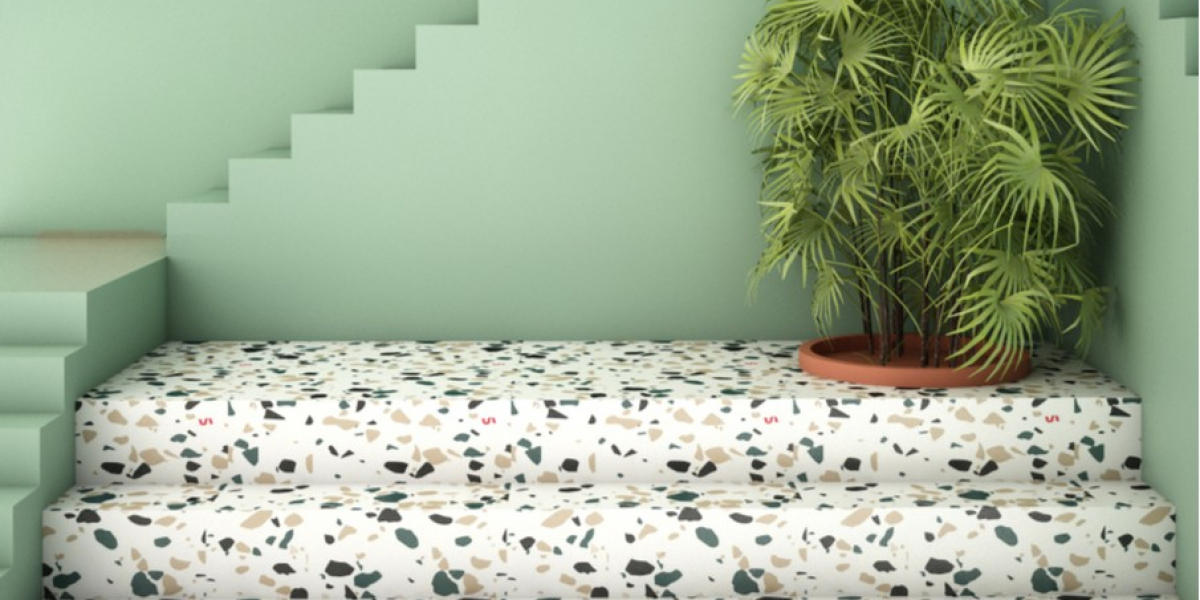When selecting flooring for homes, commercial spaces, or public areas, durability, aesthetics, and maintenance are key considerations. Among the many options available, terrazzo tiles stand out as a compelling choice for various environments. Known for their unique design, durability, and eco-friendly appeal, terrazzo tiles offer advantages that few other materials can match. This article explores the seven essential benefits of choosing terrazzo tiles over other popular flooring types and why this choice continues to be a preferred option among architects, designers, and homeowners alike.
1. Unmatched Durability
Terrazzo tiles are exceptionally durable, making them an ideal choice for high-traffic areas. Constructed from a mixture of materials like marble, granite, glass, and quartz, these tiles are set in a cement or epoxy matrix, which creates a dense and resilient surface. Unlike wood or laminate, terrazzo flooring can withstand heavy impacts, making it a preferred choice in areas like airports, hospitals, schools, and office buildings where durability is crucial.
Compared to other materials like hardwood, which can dent or scratch, and carpet, which can quickly wear out, terrazzo tiles maintain their appearance and structural integrity for decades. Terrazzo tiles can resist chipping, staining, and cracking, thus reducing the need for costly repairs or replacements. Their long-lasting nature also reduces waste and environmental impact, adding to their appeal in sustainable design.
2. Aesthetic Versatility and Customization
One of the primary reasons people choose terrazzo tiles is their versatility in terms of design. The tiles are highly customizable, allowing architects and designers to create intricate patterns and color combinations tailored to specific themes or preferences. Terrazzo tiles can be produced in almost any color, which makes it easy to match a room's aesthetic, whether the goal is a minimalist design or a vibrant, artistic space.
The flexibility of terrazzo makes it suitable for a variety of applications, from residential homes to luxury hotels. Designs can be simple, with monochromatic patterns, or more elaborate, incorporating multiple colors and materials. Unlike the relatively uniform appearance of tiles like ceramic or porcelain, terrazzo's customizable nature allows each installation to be unique. This level of personalization is one of the top reasons terrazzo is often chosen over other flooring options.
3. Low Maintenance Requirements
Terrazzo flooring is remarkably low-maintenance compared to other flooring options. Due to its smooth, non-porous surface, terrazzo tiles resist dust, moisture, and stains, making them easy to clean. A simple mop or a soft broom is often all that’s needed to keep the surface looking polished. There’s no need for harsh chemicals or specialized cleaning methods, making it a practical choice for those seeking hassle-free maintenance.
In contrast, other types of flooring, such as wood, require regular sealing or polishing to maintain their luster, and carpets can be difficult to clean and may require professional services to remove deep stains. Terrazzo, on the other hand, is extremely resilient and doesn’t require such frequent attention. A terrazzo tiles manufacturer may recommend a specific type of sealer to enhance durability, but overall, the maintenance demands are minimal.
4. Environmentally Friendly and Sustainable
Sustainability has become a critical factor in modern building materials, and terrazzo tiles excel in this aspect. Terrazzo is often made with recycled materials such as glass, marble chips, or concrete, which reduces the need for new raw materials and minimizes environmental impact. Additionally, the longevity of terrazzo tiles means they need to be replaced far less frequently than other flooring types, reducing overall waste.
For those interested in eco-friendly construction, terrazzo tiles are an excellent option. When paired with environmentally responsible manufacturing processes, terrazzo becomes a smart choice for reducing a building’s carbon footprint. This sustainable nature of terrazzo appeals to both environmentally conscious homeowners and designers working on LEED-certified projects.
5. Superior Indoor Air Quality
Indoor air quality is a crucial consideration in both residential and commercial buildings. Many flooring materials, particularly certain types of carpet and vinyl, can release volatile organic compounds (VOCs), which negatively impact indoor air quality and can cause health issues over time. Terrazzo tiles, especially those with an epoxy base, have minimal VOC emissions, making them a healthier choice for indoor environments.
Terrazzo’s non-porous and dust-resistant surface also makes it resistant to mold and bacterial growth, which is particularly beneficial for people with allergies or respiratory issues. Unlike carpet, which can harbor dust mites, or hardwood, which may require frequent refinishing with chemical-based products, terrazzo flooring contributes to a cleaner, healthier indoor atmosphere.
6. Cost-Effectiveness in the Long Term
While the initial installation cost of terrazzo flooring may be higher than some other options, its cost-effectiveness becomes evident over time. The durability and low maintenance needs of terrazzo translate into fewer repairs and replacements, leading to significant long-term savings. While materials like hardwood or vinyl may have a lower upfront cost, they are more likely to need replacement due to wear and tear.
In commercial settings, where flooring may endure heavy foot traffic, terrazzo’s resilience results in fewer interruptions for repairs or replacements, saving on downtime and maintenance expenses. For homeowners, the reduced need for costly professional cleaning or sealing services further contributes to terrazzo’s financial advantages. Thus, the long lifespan of terrazzo flooring makes it a cost-effective choice for those considering longevity in their flooring investment.
7. Heat Resistance and Thermal Benefits
Terrazzo tiles are highly resistant to heat, making them an excellent choice in both hot and cold climates. In warm weather, terrazzo’s cool surface helps maintain a comfortable indoor temperature, reducing the need for air conditioning and thus potentially lowering energy costs. In colder climates, terrazzo can be paired with radiant floor heating systems, enhancing its adaptability.
Unlike wooden floors, which can warp with temperature changes, or carpets, which insulate heat but can also trap allergens, terrazzo is stable and effective in regulating temperature. Its inherent thermal properties contribute to energy efficiency, making it an appealing choice for environmentally conscious building designs.
Conclusion: Terrazzo Tiles A Timeless Choice
Terrazzo tiles offer a combination of durability, aesthetic flexibility, low maintenance, and environmental benefits that few other flooring options can rival. While the initial cost might be a bit higher, the long-term value of terrazzo is undeniable. From its eco-friendly properties to its customizability and low upkeep, terrazzo flooring provides a reliable, beautiful, and sustainable solution for various spaces. With options available from a terrazzo tiles manufacturer to meet nearly any design vision, terrazzo remains an optimal choice for architects, designers, and homeowners looking to balance style, function, and sustainability.
As flooring trends continue to evolve, terrazzo stands out not only for its timeless appeal but also for its alignment with modern values of durability and environmental responsibility. Whether in a residential or commercial setting, terrazzo’s qualities make it a flooring option that will endure—both in style and in strength—for years to come.









